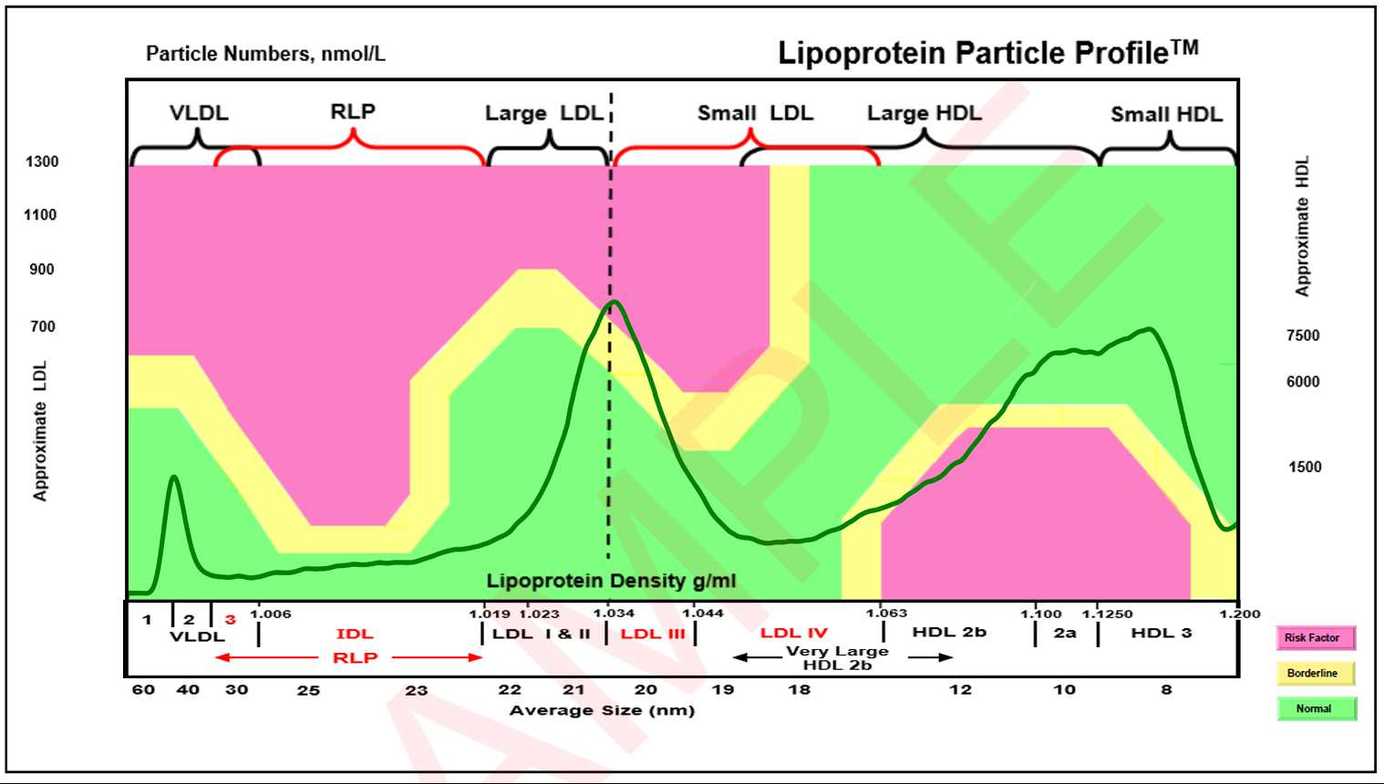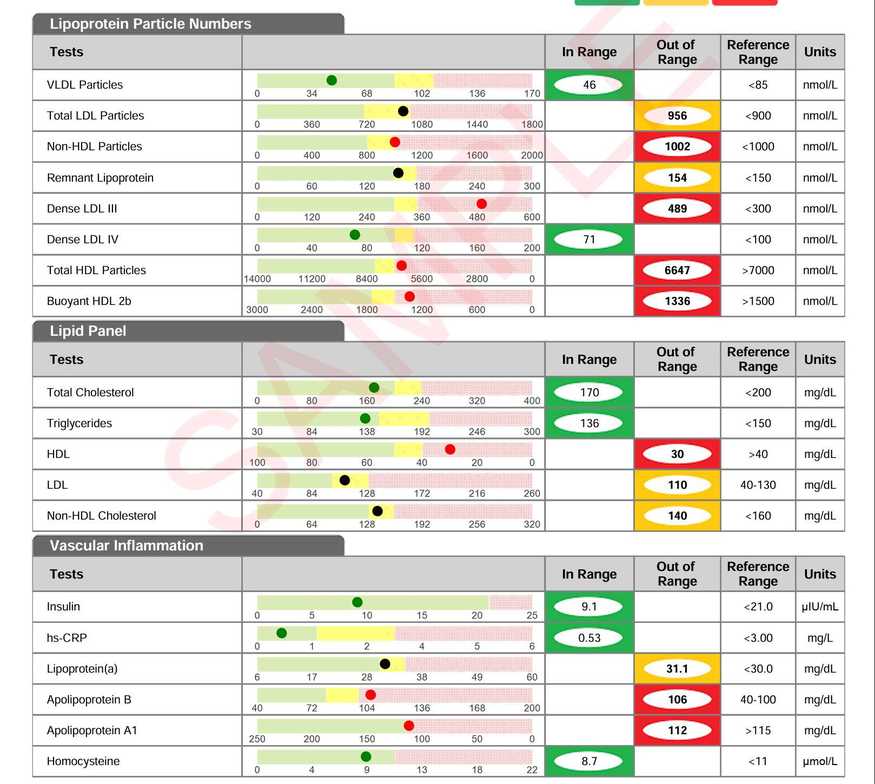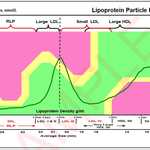This is your headline



Why is this test important?
Cholesterol has historically been used as the standard indicator for cardiovascular disease, often being classified as “good” (HDL) or “bad” (LDL). Studies have found that it is actually the lipoprotein particles that carry the cholesterol throughout the blood, not the cholesterol within them, that are responsible for key steps in plaque formation and the development of cardiovascular disease. The small, dense, cholesterol-depleted particles impart the highest risk, as does a higher number of these lipoproteins. Standard cholesterol testing does not tell us enough about the particle types—or subgroups—of each of these LDL and HDL families; therefore, it misses the earliest opportunity to prevent adverse cardiovascular events, when it’s easiest to treat.
Why is it important to know lipoprotein numbers?
Cardiovascular risk increases with a higher LDL particle count. With a higher non-HDL count, the probability of particle penetration of the arterial walls rises, regardless of the total amount of cholesterol contained in each particle.
More than 30% of the population has cholesterol-depleted LDL, a condition in which a patient's cholesterol may be "normal" but their lipoprotein particle number, and hence their actual risk, could be much higher than expected. This is especially common in people whose triglycerides are high or HDL is low. In the population with a cholesterol-depleted LDL, there can be up to a 40% error in risk assessment.
This test will show:
- Lipoprotein Fractionation
- Lipoprotein Particle Numbers
- Total Cholesterol
- Total LDL Particles
- Total HDL Particles
- Triglycerides
- Lipoprotein (a)
- hs-CRP
- Homocysteine
- Apolipoprotein A-1
- Apolipoprotein B
- Insulin
Expected Turnaround Time: lab kit will be shipped to you. You can make appointment in office for us to take your sample once your kit arrives!





